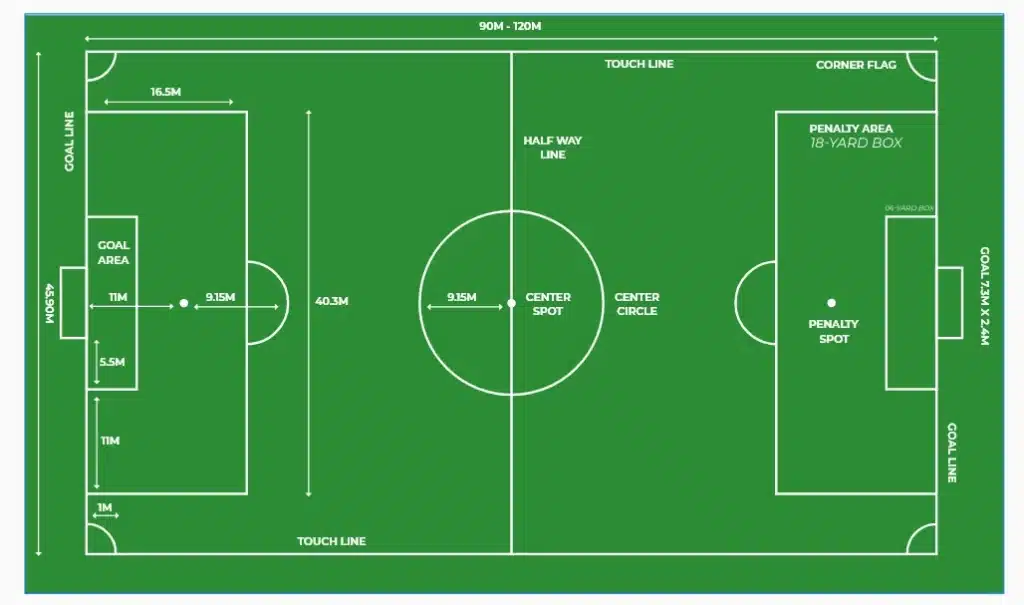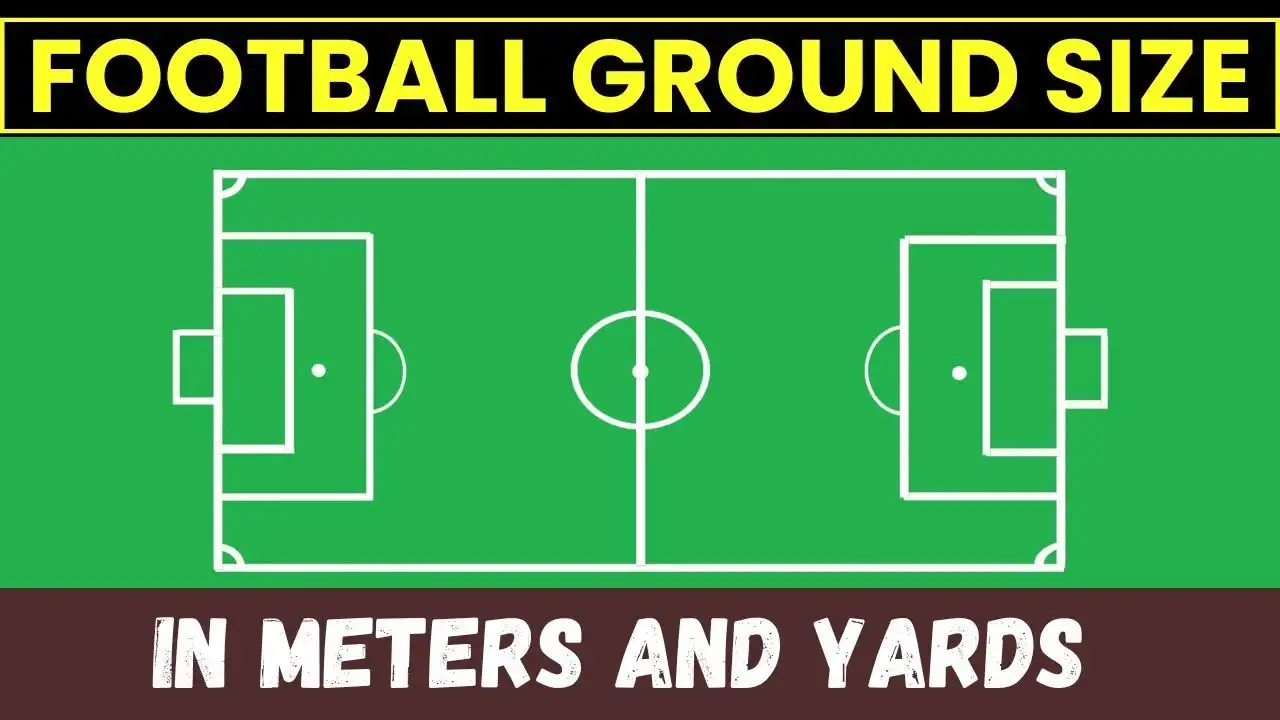Football, or ‘Soccer,’ is one of the oldest and most popular team sports. Its popularity comes from being one of the most fascinating games. The field is important, yet each football match has its own rules and methods. The green grass turf or synthetic pitch must be rectangular and have precise proportions.
Players must not touch the ball before placing or kicking it into the other team’s net. The side with the most goals wins. If there is no victor after 90 minutes (divided into two 45-minute halves), the game is declared a draw or extra time and penalty kicks are used. So here are all the information about the football ground size you need to know.
Football Field Proper Size
Football fields may vary greatly. Even though 5-a-side pitches have circular penalty areas and 11-a-side fields have 18-yard boxes, football grounds vary in size and markings. In case you want to create or play on a 5-a-side, 7-a-side, or 11-a-side pitch, the Football Association (FA) has released the dimensions.
Dimensions of Football Ground
Corner Flags and Corner Area
A conventional football pitch features four corner flags or flag poles. These corner flags must be 1.5 meters tall. A one-meter circle around each flag indicates toward the corner kick area. A corner kick is awarded when a defender on your side touches the ball before it reaches the goal line.
Goal Posts and Goal Area
Two goal posts should be at the extremities of the opposing goal lines in football. Each goal line ends with a 7.32-by-2.44-meter goal in the center of the field. The playing field measures 17.86 square meters. Games typically include nets behind the goal, even though the Laws don’t need them.
Read more- Why India is Not in the FIFA ?
The little box in front of the goal posts and along the goal lines is the goal area. People call it the “6-yard box.” Goal area is 10.5 by 5.5 meters, with 5.5 meters deep and 5.5 meters width between posts.
Penalty Kicks and Penalty Area
Players cannot enter the penalty box in front of the goalkeeper. The penalty area starts 16.5 meters from each goal post and is 16.5 meters deep. The infraction zone borders remain 40.3 meters apart. This region allows the goalie to touch the ball, among other things.

A penalty kick will go to the fouled player in the penalty area. Penalty shots must be taken from the field’s “penalty mark”. The goal’s “center” is 11 meters from the goal line, near the midst of the two goal posts.
Football Ground Size
Football fields have 9.15-meter center circles. Footballers kick off from the center of the field after goals. This ceremony occurs during halftime and after each goal. Play restarts from the goalie after a goal.
Technical Area
There are also two technical sections positioned on the “touchline” side of the pitch where the reserve players, coaching staff and other members sit and deliver instructions to on field players. Only the manager or coach, standing in their assigned box or area, is allowed to provide instructions to the players on the field.
Playing Surface
Two technical sections exist on the “touchline” side. Reserve players, coaches, and other personnel may sit here and teach on-field players. Only the manager or coach in their box may advise the players on the field.
Other than grass, football may be played on artificial turf or dirt. The most common artificial surface is artificial grass, used at many famous stadiums.
Grass Length on the Football Field
The optimal pitch grass length is 25–30 millimeters. Mowing from one side to the other leaves alternating lengths. Striped grass will occur. This vertical-referencing technology helps assistance referees see offside situations.
The Considerations of the grass
The best turfgrass depends on climate. What “drainage” signifies is removing excess water or liquids from a location. UEFA often mandates drainage system inclusion in their requirements. Avoid water gathering on the field after heavy rain by having a sand-based root zone beneath the grass. A conduit-drained sub-base lies underneath this sandy area.
Football and soccer goalposts are stationary scoring targets
Until 1882, football goalposts had no crossbar. No matter how high the ball was, it had to be booted past the goal posts to score. Before the interval was introduced before the crossbar, high jump events used a ribbon 2.5 meters above the ground to signify bar height. Ten years after its debut, the net reached England. Round and oval goal posts replaced square ones in the early 1900s.
Change for Football Ground Measurement
While football standards and field size haven’t changed much over the years, drainage systems, modern soil and grass systems, subterranean heating, and more have been added.
Previously, a boundary line divided the playing field from spectator seating, and there were no accurate markings on the playing surface. Most local league, international, and world cup matches are played in modern football venues, which are safe for players and spectators.


